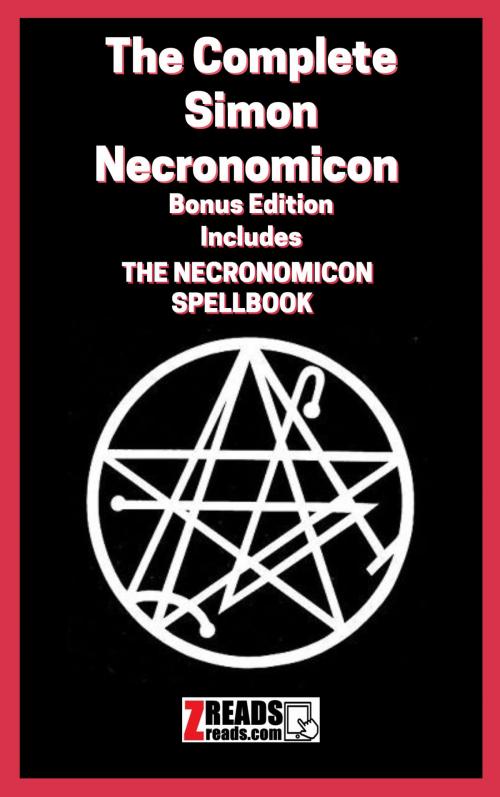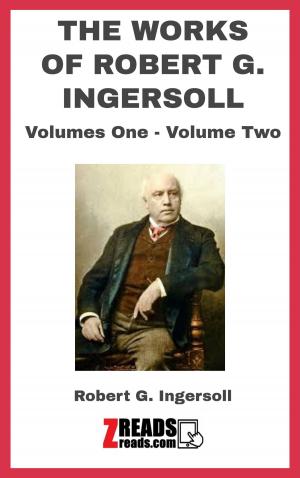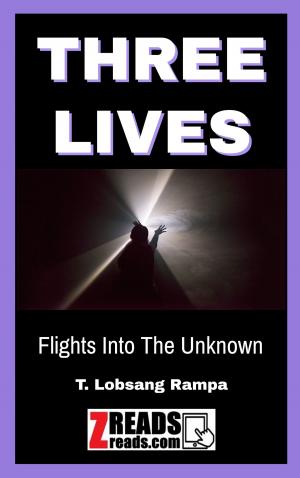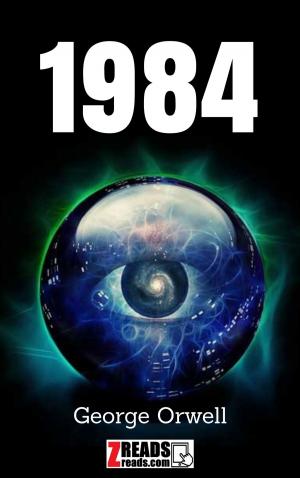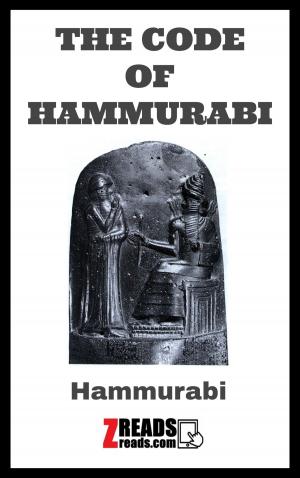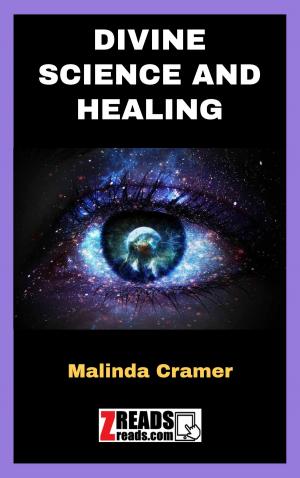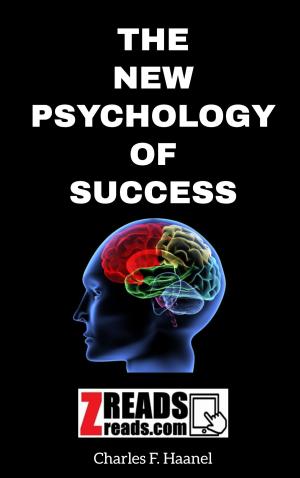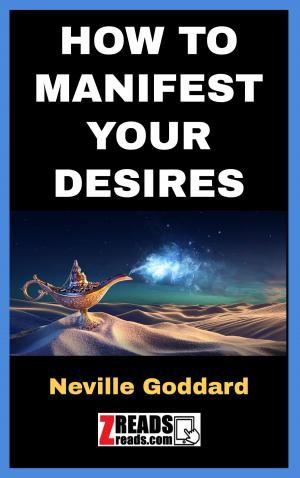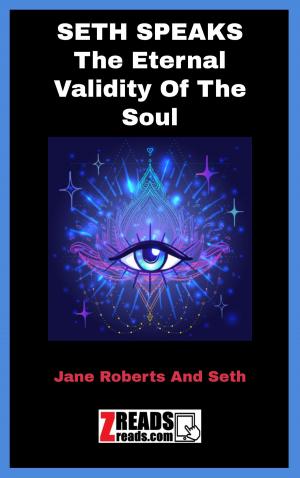THE COMPLETE SIMON NECRONOMICON
Bonus Edition Includes THE NECRONOMICON SPELLBOOK
Nonfiction, Religion & Spirituality, Occult, Occultism, Spiritualism, New Age| Author: | Simon, Matthew Mystic | ISBN: | 1230003043929 |
| Publisher: | ZREADS | Publication: | January 22, 2019 |
| Imprint: | Language: | English |
| Author: | Simon, Matthew Mystic |
| ISBN: | 1230003043929 |
| Publisher: | ZREADS |
| Publication: | January 22, 2019 |
| Imprint: | |
| Language: | English |
THE COMPLETE SIMON NECRONOMICON
Bonus Edition
Includes
THE NECRONOMICON SPELLBOOK
By Simon
THE COMPLETE SIMON NECRONOMICON
Synopsis
The Simon Necronomicon is a purported grimoire written by an unknown author, with an introduction by a man identified only as "Simon". Materials presented in the book are a blend of ancient Middle Eastern mythological elements, with allusions to the writings of H. P. Lovecraft and Aleister Crowley, woven together with a story about a man known as the "Mad Arab".
Simon's introduction
The introduction to the book (comprising about 80 pages of a total of 263) is the only part that Simon claims to have written. It relates how Simon and his associates were introduced to a Greek translation of the Necronomicon by a mysterious monk. Simon claims that after experimenting with the text, they verified that the work is a genuine collection of magical rituals that predates most known religions, and warns that anyone attempting to use the Necronomicon may "unleash dangerous forces". The introduction attempts to establish links between H. P. Lovecraft, Aleister Crowley and ancient mythology (including Sumerian, Babylonian, Assyrian, and Chaldean myths and rituals), and draw parallels to other religions (such as Christianity, Wicca, Satanism and Hebrew Mythology). Some of the discussion is based on a supposed connection between Crowley and Lovecraft first espoused by Kenneth Grant.
"The Testimony of the Mad Arab"
In addition to an introduction, the book uses a frame story titled "The Testimony of the Mad Arab". The "Testimony" is in two parts, forming a prologue and an epilogue to the core Necronomicon. The author describes himself as a "Mad Arab".
The prologue explains how the Arab first came to discover the dark secrets that he is recording, accidentally witnessing an arcane ritual performed by a cult that worships Tiamat, in which both the demons Kutulu and Humwawa are conjured.
In the epilogue, the Mad Arab is haunted by premonitions of his gruesome death. He realizes that the horrors of the Necronomicon are enraged and seek revenge upon him for revealing their existence to the world. The text is littered with non sequiturs and arcane incantations, presented as indication of his unstable mental state and his desire to protect himself from perceived danger. He is unable to sign his work, and thus remains nameless.
Magic
Much of the book is a collection of magic rituals and conjurations. Many incantations and seals are described. Most of these are intended to ward off evil or to invoke the Elder Gods to one's aid. Some of them are curses to be used against one's enemies. The incantations are written in a mixture of English and more ancient languages, with a few possible misspellings in the romanization of the archaic words. There are also several words that do not appear to be from any known language.
The many magical seals in the book pertain to particular gods and demons, and are used when invoking or summoning the entity with which each is associated. In some cases there are specific instructions on how to inscribe the seals and amulets, including the materials that should be used and the time of day for their creation; in other cases, only the seal itself is given.
For some rituals, the book mentions that sacrifices should be offered. One ritual in particular describes a human sacrifice of 11 men, needed to enchant a knife that can summon Tiamat (p. 160-161).
Both the introduction and the book's marketing make sensational claims for the book's magical power. The back blurb claims it is "the most potent and potentially, the most dangerous Black Book known to the Western World," and that its rituals will bring "beings and monsters" into "physical appearance". The book's introduction gives readers frequent warnings that the powers it contains are potentially life-threatening, and that perfect mental health is needed; otherwise the book is extremely dangerous. It claims a curse afflicted those who helped publish the book. It also claims that the Golden Dawn methods of magical banishing will not work on the entities in this book.
Good versus evil
The main theme of the book is the struggle between good and evil. The principal forces of good are the "Elder Gods"; and those of evil, the "Ancient Ones". These two groups are populated with authentic Mesopotamian gods and monsters as well as fictitious ones. The Ancient Ones are older and represent primeval chaos. Chief among them is Tiamat. The Elder Gods are younger entities, children of the Ancient Ones, who rebelled against them and prevailed.
Included in the Simon Necronomicon is a story that is a variant of the Enuma Elish, the Babylonian creation epic. It relates how Marduk (Leader of the Elder Gods) slew Tiamat (Queen of the Ancient Ones), clove her body in two and created the Heaven and the Earth from the two halves. The Elder Gods also created mankind from the blood of Kingu (an Ancient One). Other Ancient Ones are imprisoned beneath the Earth or beyond the Heavens. With the exception of the terms "Elder Gods" and "Ancient Ones" (which were first popularized by the fiction of H. P. Lovecraft), many of these stories are derived from authentic myths.
Simon's introduction claims that Lovecraft's mythos tells of the struggle between good and evil, as personified by the good Elder Gods and the evil "Great Old Ones". Lovecraft's work did not feature such a conflict, however; the theme of "cosmic war" derives instead from the apocryphal Book of Enoch, cited by Lovecraft in his essay "Supernatural Horror in Literature", and later contributions to the Cthulhu Mythos by author August Derleth.
According to Simon, the Ancient Ones now lie "not dead but dreaming", awaiting a day when they may return to life. To do this, they are dependent upon the positions of the stars as well as the sacrifices of their mortal followers. These ideas largely run parallel to elements of the Cthulhu Mythos, so much so that critics claim that this is an obvious attempt to reconcile the Simon Necronomicon with Lovecraft's well-known stories such as "The Call of Cthulhu". The Armageddon and Apocalypse of Judeo-Christianity are also referenced: following the conflagration of the End Times, the flesh of the vanquished Leviathan is to be served up to the victorious survivors.
THE NECRONOMICON SPELLBOOK
Synopsis
The mighty powers invoked by this eldritch tome are really long-forgotten psychic abilities, able to affect the most basic needs and desires, including Love, Wealth, Peace of Mind, and Protection Agains Enemies. But now comes a guide that enables anyone to pick up the book and use its ineluctable power "without fear or risk" according to editor Simon.
Edired and co-authored by
Matthew Mystic
File information
File size (Digital) (1.56MB)
Books included (2)
Illustrations/images (Yes)
Page count (8.5x11) (239)
Word count (53,099)
THE COMPLETE SIMON NECRONOMICON
Bonus Edition
Includes
THE NECRONOMICON SPELLBOOK
By Simon
THE COMPLETE SIMON NECRONOMICON
Synopsis
The Simon Necronomicon is a purported grimoire written by an unknown author, with an introduction by a man identified only as "Simon". Materials presented in the book are a blend of ancient Middle Eastern mythological elements, with allusions to the writings of H. P. Lovecraft and Aleister Crowley, woven together with a story about a man known as the "Mad Arab".
Simon's introduction
The introduction to the book (comprising about 80 pages of a total of 263) is the only part that Simon claims to have written. It relates how Simon and his associates were introduced to a Greek translation of the Necronomicon by a mysterious monk. Simon claims that after experimenting with the text, they verified that the work is a genuine collection of magical rituals that predates most known religions, and warns that anyone attempting to use the Necronomicon may "unleash dangerous forces". The introduction attempts to establish links between H. P. Lovecraft, Aleister Crowley and ancient mythology (including Sumerian, Babylonian, Assyrian, and Chaldean myths and rituals), and draw parallels to other religions (such as Christianity, Wicca, Satanism and Hebrew Mythology). Some of the discussion is based on a supposed connection between Crowley and Lovecraft first espoused by Kenneth Grant.
"The Testimony of the Mad Arab"
In addition to an introduction, the book uses a frame story titled "The Testimony of the Mad Arab". The "Testimony" is in two parts, forming a prologue and an epilogue to the core Necronomicon. The author describes himself as a "Mad Arab".
The prologue explains how the Arab first came to discover the dark secrets that he is recording, accidentally witnessing an arcane ritual performed by a cult that worships Tiamat, in which both the demons Kutulu and Humwawa are conjured.
In the epilogue, the Mad Arab is haunted by premonitions of his gruesome death. He realizes that the horrors of the Necronomicon are enraged and seek revenge upon him for revealing their existence to the world. The text is littered with non sequiturs and arcane incantations, presented as indication of his unstable mental state and his desire to protect himself from perceived danger. He is unable to sign his work, and thus remains nameless.
Magic
Much of the book is a collection of magic rituals and conjurations. Many incantations and seals are described. Most of these are intended to ward off evil or to invoke the Elder Gods to one's aid. Some of them are curses to be used against one's enemies. The incantations are written in a mixture of English and more ancient languages, with a few possible misspellings in the romanization of the archaic words. There are also several words that do not appear to be from any known language.
The many magical seals in the book pertain to particular gods and demons, and are used when invoking or summoning the entity with which each is associated. In some cases there are specific instructions on how to inscribe the seals and amulets, including the materials that should be used and the time of day for their creation; in other cases, only the seal itself is given.
For some rituals, the book mentions that sacrifices should be offered. One ritual in particular describes a human sacrifice of 11 men, needed to enchant a knife that can summon Tiamat (p. 160-161).
Both the introduction and the book's marketing make sensational claims for the book's magical power. The back blurb claims it is "the most potent and potentially, the most dangerous Black Book known to the Western World," and that its rituals will bring "beings and monsters" into "physical appearance". The book's introduction gives readers frequent warnings that the powers it contains are potentially life-threatening, and that perfect mental health is needed; otherwise the book is extremely dangerous. It claims a curse afflicted those who helped publish the book. It also claims that the Golden Dawn methods of magical banishing will not work on the entities in this book.
Good versus evil
The main theme of the book is the struggle between good and evil. The principal forces of good are the "Elder Gods"; and those of evil, the "Ancient Ones". These two groups are populated with authentic Mesopotamian gods and monsters as well as fictitious ones. The Ancient Ones are older and represent primeval chaos. Chief among them is Tiamat. The Elder Gods are younger entities, children of the Ancient Ones, who rebelled against them and prevailed.
Included in the Simon Necronomicon is a story that is a variant of the Enuma Elish, the Babylonian creation epic. It relates how Marduk (Leader of the Elder Gods) slew Tiamat (Queen of the Ancient Ones), clove her body in two and created the Heaven and the Earth from the two halves. The Elder Gods also created mankind from the blood of Kingu (an Ancient One). Other Ancient Ones are imprisoned beneath the Earth or beyond the Heavens. With the exception of the terms "Elder Gods" and "Ancient Ones" (which were first popularized by the fiction of H. P. Lovecraft), many of these stories are derived from authentic myths.
Simon's introduction claims that Lovecraft's mythos tells of the struggle between good and evil, as personified by the good Elder Gods and the evil "Great Old Ones". Lovecraft's work did not feature such a conflict, however; the theme of "cosmic war" derives instead from the apocryphal Book of Enoch, cited by Lovecraft in his essay "Supernatural Horror in Literature", and later contributions to the Cthulhu Mythos by author August Derleth.
According to Simon, the Ancient Ones now lie "not dead but dreaming", awaiting a day when they may return to life. To do this, they are dependent upon the positions of the stars as well as the sacrifices of their mortal followers. These ideas largely run parallel to elements of the Cthulhu Mythos, so much so that critics claim that this is an obvious attempt to reconcile the Simon Necronomicon with Lovecraft's well-known stories such as "The Call of Cthulhu". The Armageddon and Apocalypse of Judeo-Christianity are also referenced: following the conflagration of the End Times, the flesh of the vanquished Leviathan is to be served up to the victorious survivors.
THE NECRONOMICON SPELLBOOK
Synopsis
The mighty powers invoked by this eldritch tome are really long-forgotten psychic abilities, able to affect the most basic needs and desires, including Love, Wealth, Peace of Mind, and Protection Agains Enemies. But now comes a guide that enables anyone to pick up the book and use its ineluctable power "without fear or risk" according to editor Simon.
Edired and co-authored by
Matthew Mystic
File information
File size (Digital) (1.56MB)
Books included (2)
Illustrations/images (Yes)
Page count (8.5x11) (239)
Word count (53,099)
